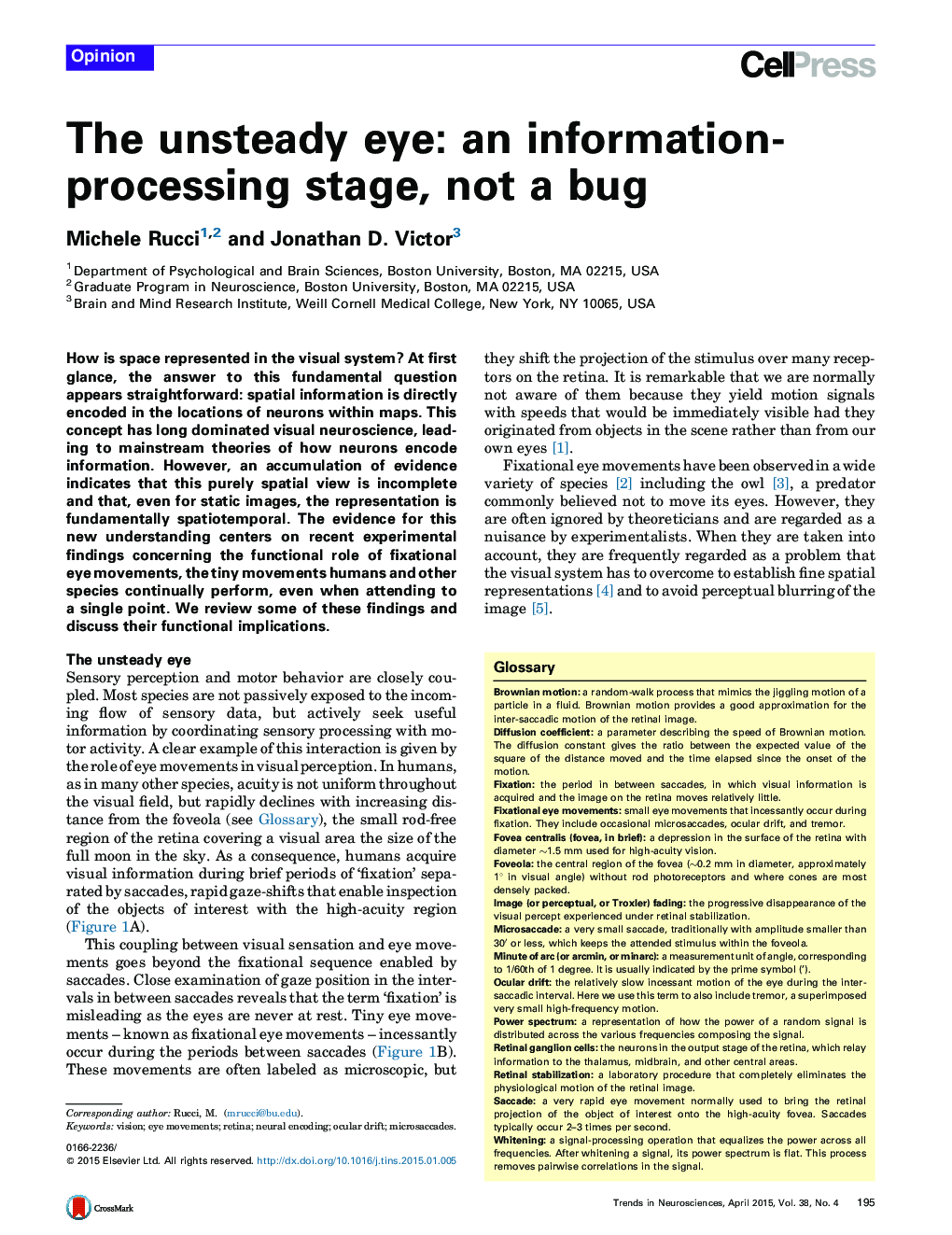| کد مقاله | کد نشریه | سال انتشار | مقاله انگلیسی | نسخه تمام متن |
|---|---|---|---|---|
| 4354158 | 1299019 | 2015 | 12 صفحه PDF | دانلود رایگان |
• Small eye movements are always present during natural visual fixation.
• Fixational movements do not merely prevent the image from fading, they reformat it.
• Fixational modulations eliminate correlations before neural processing.
• Fixational modulations enhance high spatial frequencies and begin edge extraction.
• Spatial representations are intrinsically sensorimotor starting from the retina.
How is space represented in the visual system? At first glance, the answer to this fundamental question appears straightforward: spatial information is directly encoded in the locations of neurons within maps. This concept has long dominated visual neuroscience, leading to mainstream theories of how neurons encode information. However, an accumulation of evidence indicates that this purely spatial view is incomplete and that, even for static images, the representation is fundamentally spatiotemporal. The evidence for this new understanding centers on recent experimental findings concerning the functional role of fixational eye movements, the tiny movements humans and other species continually perform, even when attending to a single point. We review some of these findings and discuss their functional implications.
Journal: - Volume 38, Issue 4, April 2015, Pages 195–206
